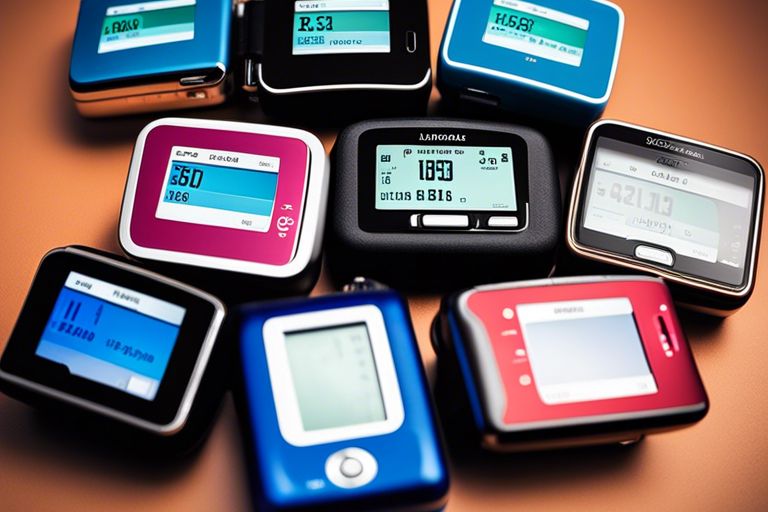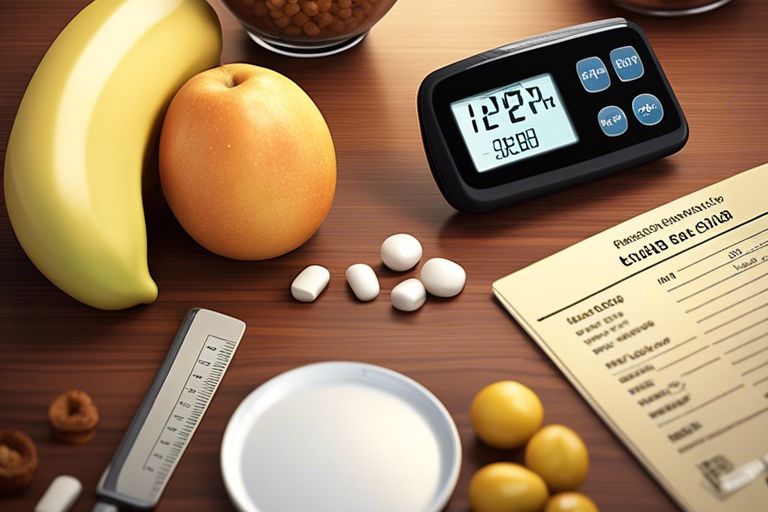Embarking on the journey of managing Type 1 diabetes in a child can feel overwhelming and daunting for any parent. However, with the right knowledge, support, and strategies, it is possible to navigate this complex condition effectively. In this comprehensive guide, we will explore into practical tips and advice to help parents cope with the challenges that come with managing Type 1 diabetes in children. From understanding the basics of the condition to implementing daily care routines and handling emergencies, this guide aims to empower parents with the tools they need to support their child’s health and well-being.
Key Takeaways:
- Educate Yourself: Understanding Type 1 Diabetes is crucial in order to effectively manage your child’s condition.
- Team Approach: Work closely with healthcare professionals, teachers, and caregivers to ensure your child’s diabetes is managed effectively in all environments.
- Monitor Blood Sugar Levels: Regularly checking blood sugar levels and keeping track of patterns can help fine-tune your child’s insulin dosage.
- Encourage Independence: Empower your child to take ownership of their diabetes care as they grow older, teaching them to manage their condition responsibly.
- Seek Support: Connect with other parents of children with Type 1 Diabetes for guidance, advice, and emotional support to navigate the challenges of caring for a child with this condition.
Initial Coping Strategies
Obviously, receiving a diagnosis of Type 1 Diabetes in your child can be overwhelming. As a parent, it is crucial to develop coping strategies that not only help you navigate through this challenging time but also support your child in managing their condition effectively.
Tips for Managing the Emotional Impact
Emotional support is essential for both you and your child during this period of adjustment. It is normal to experience a range of emotions, including fear, sadness, and even guilt. To help manage the emotional impact:
- Communicate openly and honestly with your child about their condition.
- Seek counseling or therapy for both you and your child, if needed.
- Connect with other parents of children with Type 1 Diabetes for support and shared experiences.
Recognizing and addressing the emotional toll of Type 1 Diabetes is a crucial step in developing effective coping strategies for both you and your child.
Establishing a Support System
Initial support is key in helping you and your child cope with the challenges of managing Type 1 Diabetes. Surround yourself with a strong support system that includes healthcare professionals, family members, friends, and even support groups or online communities specifically for parents of children with diabetes.
Impact of a strong support system cannot be overstated; it can provide reassurance, guidance, and encouragement during difficult times, ultimately helping you and your child navigate through the complexities of Type 1 Diabetes with confidence.
Daily Management of Type 1 Diabetes
While coping with Type 1 Diabetes in children can be challenging, daily management is essential for maintaining health and ensuring proper care. From nutritional guidance to monitoring insulin levels, parents play a crucial role in supporting their child’s well-being and managing the condition effectively.
Nutritional Guidance and Meal Planning
Diabetes requires close attention to diet and meal planning to help regulate blood sugar levels. It is essential to work with a healthcare provider or a dietitian to create a balanced meal plan that includes carbohydrates, proteins, and fats in the right proportions. Planning meals ahead of time and encouraging healthy eating habits can help in managing blood glucose levels and preventing spikes or drops in sugar levels.
Parents should also educate themselves on reading food labels, understanding portion sizes, and monitoring the timing of meals and snacks. Consistency in meal timing and composition can greatly impact a child’s glucose control and overall well-being.
How-To: Monitor and Administer Insulin
Monitor your child’s blood sugar levels regularly using a glucose meter to track fluctuations throughout the day. Consult with your healthcare provider to determine the appropriate insulin dosage based on these readings. Administer insulin as prescribed, whether through injections or an insulin pump, and keep a log of insulin doses to ensure consistency and accuracy.
Learning how to administer insulin properly is crucial for managing Type 1 Diabetes. Work closely with your healthcare team to understand the different types of insulin, dosage adjustments, and injection techniques. By monitoring and administering insulin effectively, parents can help their child maintain stable blood sugar levels and reduce the risk of complications associated with diabetes.
Daily monitoring and adjustments may be necessary to accommodate changes in your child’s activity level, diet, and overall health. Keeping a detailed record of blood sugar levels, insulin doses, and any relevant factors can provide valuable insights for optimizing your child’s diabetes management plan.
Navigating Social and Environmental Factors
Your child’s journey with type 1 diabetes will undoubtedly be influenced by their social interactions and the environment around them. It’s essential to be prepared and proactive in navigating these factors to ensure your child’s well-being and a sense of normalcy in their life.
Incorporating School and Extracurricular Activities
Navigating your child’s participation in school and extracurricular activities can be a challenge, but with proper planning and communication, it is entirely achievable. Ensure that the school is aware of your child’s condition and has a comprehensive care plan in place. Educate teachers, coaches, and staff about diabetes management, symptoms of high and low blood sugar, and emergency protocols. Encourage your child to carry supplies like glucose tablets, insulin, and a blood glucose meter at all times, and make sure they know how to use them effectively.
Perceiving any signs of discrimination or misunderstanding related to your child’s diabetes is crucial. Be an advocate for your child and work with the school to address any concerns promptly. With proper support and monitoring, your child can thrive academically and socially while managing their diabetes effectively.
Traveling and Special Events Management
Special events and travel can present unique challenges for children with type 1 diabetes, but with proper planning and precautions, they can still enjoy these experiences to the fullest. When traveling, ensure that you have more than enough supplies, including insulin, test strips, and snacks, to account for any unexpected delays. Familiarize yourself with the local healthcare facilities at your destination and carry a letter from your child’s healthcare provider outlining their condition and necessary medications.
Special events like birthday parties or outings with friends may require extra vigilance in monitoring your child’s blood sugar levels. Make sure your child knows how to communicate their needs and advocate for themselves in social settings. Encourage open dialogue with event organizers and other parents to ensure that your child’s diabetes management needs are met without causing a disruption.
Traveling with a child with type 1 diabetes requires careful planning and attention to detail, but with the right preparation, it can be a rewarding and fulfilling experience for the entire family.
Advanced Coping Mechanisms
Keep in mind that coping with type 1 diabetes in children can be challenging, but with the right strategies, it is possible to navigate through these difficulties. Here are some advanced coping mechanisms that can help you and your child better manage this condition:
- Develop a support network of other parents, healthcare professionals, and diabetes educators.
- Stay organized by keeping track of blood sugar levels, insulin doses, and meal plans.
- Encourage open communication with your child about their feelings and experiences with diabetes.
- Stay informed about the latest advancements in diabetes management and technologies.
How-To: Recognize and Handle Potential Complications
For parents of children with type 1 diabetes, it is essential to be vigilant about potential complications that may arise. Recognizing early warning signs and knowing how to handle them can help prevent serious health issues. Monitor your child’s blood sugar levels regularly and be aware of symptoms such as high or low blood sugar, ketones in the urine, and signs of diabetic ketoacidosis. In case of any concerns, contact your healthcare provider immediately for guidance on how to address the situation.
Additionally, it is crucial to have a plan in place for emergencies, such as keeping a glucagon kit on hand and educating family members, teachers, and caregivers on how to use it. By being proactive and prepared, you can effectively manage potential complications and ensure the safety and well-being of your child.
Advocating for Your Child’s Needs
On the journey of managing type 1 diabetes in children, advocacy plays a significant role in ensuring that your child’s needs are met. This involves communicating with healthcare providers, educators, and other parents to advocate for the best possible care and support for your child. Being a strong advocate means staying informed about your child’s rights, seeking out resources, and being proactive in addressing any challenges that may arise.
A key aspect of advocating for your child is fostering collaboration between all members of your child’s support network. By working together towards common goals, you can create a cohesive and effective care plan that meets the unique needs of your child with type 1 diabetes.
To wrap up
On the whole, dealing with type 1 diabetes in children can be overwhelming for parents. However, armed with the proper knowledge, resources, and support, it is possible to effectively manage the condition and ensure a good quality of life for your child. This guide has provided valuable tips and strategies for coping with the challenges that come with managing type 1 diabetes in children. By staying informed, working closely with healthcare providers, and maintaining open communication with your child, you can navigate the complexities of type 1 diabetes with confidence and strength.
FAQ
Q: What is Type 1 Diabetes in children?
A: Type 1 Diabetes is a chronic condition where the pancreas produces little to no insulin, resulting in high blood sugar levels. It commonly begins in childhood or adolescence.
Q: What are the common symptoms of Type 1 Diabetes in children?
A: Common symptoms include increased thirst, frequent urination, extreme hunger, unexplained weight loss, fatigue, and mood changes.
Q: How is Type 1 Diabetes diagnosed in children?
A: Diagnosis is typically done through blood tests that measure blood sugar levels. Other tests may also be done to confirm the diagnosis.
Q: What are the key components of managing Type 1 Diabetes in children?
A: Key components include monitoring blood sugar levels, insulin therapy, healthy eating, regular exercise, and maintaining a support system.
Q: How can parents cope with the challenges of managing Type 1 Diabetes in their children?
A: Parents can cope by educating themselves about the condition, communicating openly with their child’s healthcare team, seeking support from other parents of children with Type 1 Diabetes, and prioritizing self-care to better support their child.




